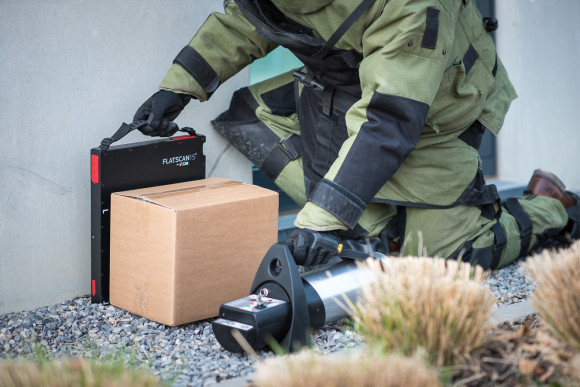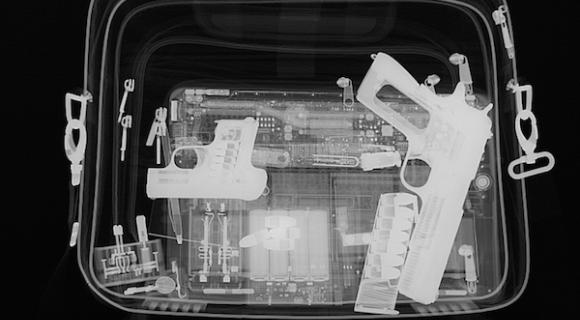More than ever before, the current situation and the climate in which we live in calls for important measures to protect the general public from threats coming from mischievous individuals such as extremist factions members and other terrorist groups adherents.
Being a hub for low cost airlines such as Ryanair and Jetairfly, the Brussels South Charleroi Airport welcomes almost 7 millions passengers each year.
With thousands of people walking the halls of this buzzing public place, a premium security operation has to be put in place in order to ensure the safety of all these passengers and the 3,500 employees that work for the different airlines and the various restaurants, shops, and boutiques located all over the terminal.
That being said, who could be more qualified to talk to us about the security tactics and processes put in place to ensure the security of all these people, then Security Operations Chief, Abdel El Gharib?
My colleague, Greg and I seized the first occasion we got to interview the man in charge of the whole operation, and drove from our offices located in Welkenraedt to Gosselies, Charleroi (46 km south of Brussels) to get a glimpse at the security measures implemented at the BSC Airport.
A quick ride later, Greg and I arrived in front of the BSC’s terminal ready to start our examination. From the start, we could already see the extent of the operation. Indeed dozens of CCTV’s were already in action observing the every move of the people parking their cars…. Mr. El Gharib’s team already knew we had arrived for the interview.
Following a brief chitchat in front of the Check-in counters, Mr. El Gharib welcomed us inside the “control room”, and we got to see behind the scene of the all Security Operation put in place to monitor the entire terminal.

Once inside, Mr. El Gharib proceeded to explain the process that takes place every time a suspect package or object is left unattended in the Airport itself, the parking lots, garages or at the bus and taxi stops.
According to Abdel El Gharib, a team of qualified operators and security agents are observing and assessing the entire facility thanks to HD cameras and by walking the site 24/7. If a suspect package is spotted, a security perimeter is set up instantly. The item is, therefore isolated and nobody is allowed to touch the object. From then on, the investigation begins…
You could believe that evacuation of the airport undergoes instantly, followed by the arrival of the EOD (Explosive Ordnance Disposal) or bomb squad teams… but this would actually results in a massive panic and involved important financial impacts.
Once the perimeter is set-up, the fact-finding process begins. First of all, the videotapes recorded during the day are scrupulously examined in order to identify the person responsible for abandoning the suspect objet.
Secondly, the first explosive test is carried out by a member of the Airport’ security team with the help of a “sniffer”, which is basically what its name suggests: a device that “smells” the suspect object, and not unlike a dog, detects presence of explosive compounds.
Just by absorbing a very small quantity of the bag or object’s composition, the machine, which is using Ion-mobility Spectronomy (IMS), is able to tell you whether that particular object has been in contact with explosives. You might have seen that particular technology before if you have been asked to swab your hands against a piece of paper before entering a high-protected building like an embassy or a government facility.
Unfortunately, this kind of test can easily produce false results… indeed, these “sniffers” are set up to detect common compounds such as glycerin and potassium nitrate, that are used in every-day life products, such as hand sanitizers and food additives.
Therefore, if the test reveals to be positive, then, a second test is carried out… by a dog! Machines are good; but dogs have a sense of smell that is 10,000 times better than the ones of humans. Moreover, these detection dogs have been trained for years to detect even the slightest trace of explosive, which makes them incredible defensive weapons against terrorism.
If the dog test is also positive, the situation becomes critical and more drastic measures ought to be taken.
But before calling the bomb squad in, the security team needs to make sure that a life-threatening device is actually inside the given object.
At that stage, it is time to bring out the big guns, a portable x-ray detection system, that allows the security team of the Brussels South Charleroi Airport to inspect inside the package without ever having to open it up – since doing so could trigger the explosion.
Since x-rays are ionizing radiations, a bigger security parameter is determined.
Once this is done, one of the six operators that counts the BSC Airport, easily obtain a clear and precise image of the interior of the object in just a few seconds, thanks to the FLATSCAN Technology – developed by the x-ray expert and Belgo-American company, Teledyne ICM.
Such system works by sending a beam of x-ray, which is basically a type of light, onto the suspect package. The beam goes trough the package and the elements inside it, before getting detected by the FLATSCAN. Since different objects differently absorb x-ray radiations, it is possible to get a detailed image outlining theses objects with different shades of grey.
Because the system is easily portable and only requires a single operator, the FLATSCAN technology is used at the BSC Airport and throughout the world by many EOD/EID, border control, and VIP protection teams.
Once the image is on the screen, the security team member can also analyze and edit the image by using various techniques such as the histogram and the dual energy technologies.
Once the security team is able to see through the package, no more doubt remains… Thus, if the operators conclude that the object has a chance to be armful, the bomb disposal team is called in and the explosive device is defused in the shortest time possible.
Thankfully, such cases never happened at the Brussels South Charleroi Airport… but Mr. El Gharib’s team is always on the lookout for suspect baggage, and trains regularly with all the divers devices, in order to be ready in case of such situation.
We would like to thank Mr. El Gharib for having had the kindness to answer our questions and welcome us within the Security quarter of the BSCA.

